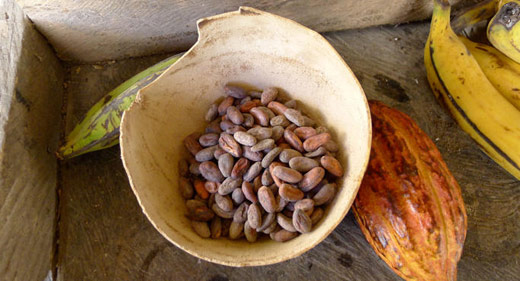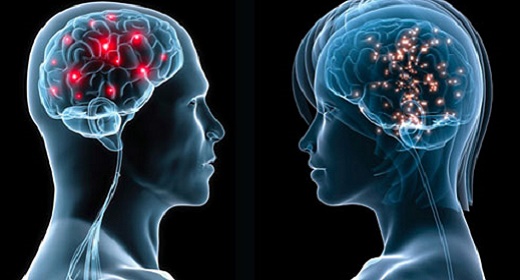Cocoa, one of nature’s many miracles, is in fact the great super-food that many people seek…

Cocoa makes other so-called super-fruits pale in comparison. Cocoa is a titan of health benefits, the likes of which humanity has never known. It is the profound medicine that scientists and researchers toil to discover. If cocoa were a pharmaceutical drug, it would be hailed as the greatest medicine of all time, and its discoverer would reap the Nobel prize in Medicine. Cocoa is all of that. Cocoa is right out in the open, more protective than any other food, and more powerful than any medicine ever devised.
There is sweet irony in the fact that cocoa, once considered by some self-appointed health experts to be deleterious to health, has proven over time to be extraordinarily beneficial for health indeed. In fact, you could say that after water, cocoa is the healthiest known substance you can put into your body. If this statement seems to over-reach, consider that no other substance, of any kind, helps to prevent primary killer diseases as well as cocoa. In fact, if cocoa were consumed judiciously and regularly, it would prove the single greatest life-saving medication of all time.
But cocoa is a food, and this fact harks back to the proviso of Hippocrates, “Let food be thy medicine.” Not only is cocoa a food, but it is beloved around the world for its sumptuous flavor, and for the way it promotes a positive state of mind and mood. Can cocoa be the greatest medicinal food on earth? The answer is an unequivocal yes.
Over the past dozen of years or so, a steady stream of science has emerged, showing that cocoa and the confection made from it (chocolate) possess extraordinary life-imbuing and disease-fighting properties. Most notably, cocoa demonstrates significant benefits for the cardiovascular system, helping to reduce the risk of heart attack and stroke, reduce the risk of high blood pressure, and even reduce the risk of cancer. Furthermore, cocoa consumption is associated with reduced cognitive decline in old age.
Cocoa and Your Heart
Cocoa contains over 700 known compounds. And for all we know, there may be many more that remain undiscovered. Of particular interest to scientists are the antioxidant compounds in cocoa. Antioxidants are compounds that plants manufacture to prevent their own cells from premature destruction due to exposure to heat, light, air, moisture and time. In the human body, many of these compounds prevent reactive oxygen species (ROS) from destroying cells and causing premature aging and disease. Cocoa is especially rich in polyphenols, a group of protective antioxidant compounds found in many plant foods such as red wine and tea, and which are the subjects of scientific investigation for their beneficial influence on cardiovascular health. The polyphenols include anthocyanins, isoflavones, flavanones, flavonols, flavanols, and flavones. Of special interest to health researchers are flavanols in cocoa, including flavan-3-ols, catechins, epicatechins and proanthocyanidins. These naturally-occurring substances not only protect the cells of our bodies from premature destruction, but they also help to reduce the risk of killer diseases.
Cardiovascular disease is the primary killer of adults. The polyphenols in cocoa are cardio-protective in two ways. They help to reduce the oxidation of low-density lipoproteins (LDL), or so-called ‘bad cholesterol.” Oxidation of LDL is considered a major factor in the promotion of coronary disease, most notably heart attack and stroke. Additionally, polyphenols inhibit blood platelets from clumping together. This clumping process, called aggregation, leads to atherosclerosis, hardening of the arteries. By inhibiting aggregation, polyphenols reduce the risk of atherosclerosis. Since atherosclerosis is a major killer of American adults, the protection provided by the polyphenols in cocoa is of real value. It can literally mean the difference between life and death.
Thanks to various studies, we have learned that tea, apples, onions, and red wine all help to reduce the risk of cardiovascular disease, due to their content of beneficial antioxidant polyphenols. Yet of all foods known, cocoa has the highest antioxidant polyphenol content, and provides the greatest cardio-protection. In fact, no heart drug, of any kind, comes even close to imparting the heart benefits of cocoa.
According to work performed at the Department of Nutrition at University of California, Davis, cocoa not only inhibits platelet aggregation, but it thins the blood, thus slowing coagulation. In healthy subjects given a strong cocoa beverage, platelet aggregation was reduced and fewer microparticles had formed than normal. Additionally, blood from the subjects took longer to form a clot than blood from control subjects. This shows that cocoa performs the same beneficial anti-clotting activity as aspirin.
UC Davis researcher Carl Keen noted “Our work supports the concept that the chronic consumption of cocoa may be associated with an improved cardiovascular health; yet some positive effects can even be observed on an acute basis.” He adds: “Cocoa and presumably other forms of chocolate can be part of a healthy diet”.
Even small amounts of cocoa can reduce cholesterol in the blood, and can lower blood pressure. Even more, regular intake of cocoa has been shown to improve overall function of vein and arteries.
Cocoa, Mind and Mood
Another dimension of the benefits of cocoa and chocolate consumption concerns mood. Cocoa is rich in agents that enhance the production of various feel-good chemicals in the brain, notably serotonin and dopamine. This means that cocoa possesses anti-depressant, mood-elevating properties. This is no surprise to the any millions of people who self medicate with chocolate every day.
“The beverage of the gods was Ambrosia; that of man is chocolate. Both increase the length of life in a prodigious manner.” – in Phantastica, Lewis Lewin
Cocoa, that mysterious and exotic rainforest food from the ancient Maya, provokes a luxurious, content mood, a serene sense of sumptuous delight. Cocoa is a Trojan horse, carrying into the body many hundreds of natural compounds, some ordinary and some exotic, which work busily to modify mood in subtle yet undeniable ways. For a growing body of scientific investigation has revealed to some modest extent how and why cocoa promotes reverie and makes us feel so good.
“The cocoa drink, or chocolate, has an additional quality not shared by tea or coffee. Whereas the latter two retard metabolism and beneficially stimulate the nervous system if taken moderately, chocolate directly nourishes.” – Baron Ernst von Bibra
As I have previously mentioned, cocoa is a veritable cornucopia of naturally-occurring compounds. Of this multitude, the most comprehensively studied are the methylxanthines. The two methylxanthines in chocolate are caffeine and theobromine. Compared with coffee, cocoa is a poor caffeine source. According to the Chocolate Information Center, a 50 gram piece of dark chocolate will yield between 10 – 60 milligrams of caffeine, as compared with a 5 ounce cup of coffee, which can yield up to 180 milligrams. Nonetheless, cocoa can give a modest caffeine lift.
“The stimulant effects of cocoa increase with its theobromine content. The stimulating action of theobromine is doubtless far inferior to that of caffeine, but it exists, although less evident than that of the latter. “ – Lewis Lewin
Theobromine, the second methylxanthine, occurs at a concentration of about 250 milligrams in a 50 gram bar of dark chocolate. Like caffeine, theobromine is a central nervous system stimulant, though it is appreciably weaker. But theobromine is a stronger cardiac stimulant, and a more potent diuretic. The presence of both caffeine and theobromine certainly contribute to the overall mood-modifying effect of this ambrosial food. But cococa is not an especially potent stimulant food per se. Rather, it is a complex cocktail, whose multitudinous compounds come at the brain in a thousand ways, creating a delightful and sensuous chemical soup which tickles and teases our gray matter, producing a unique reverie no other substance can replicate.
“Regarding its physiological effects, it is most probable that, similar to caffeine in coffee, theobromine is one of the most important components of cocoa.” – Baron Ernst von Bibra
Of the mood-modifying compounds in cocoa, one is PEA, or phenethylamine. This chemical, which occurs in chocolate in small quantities, stimulates the nervous system and triggers the release of pleasurable opium-like compounds known as endorphins. It also potentiates the activity of dopamine, a neurochemical directly associated with sexual arousal and pleasure. Phenethylamine increases in the brain when we fall in love, and during orgasm. The giddy, restless feelings that occur when we are in love are at least partly due to PEA. This adds a rather remarkable dimension to cocoa, and may account for why it is so highly prized. For while there are a great many agents in nature which boost libido and enhance sexual function, chocolate alone actually promotes the brain chemistry of being in love. Chocolate is the gift of lovers for this very reason.
Cocoa is a sensuous delight whose rich flavor, silky mouth feel and earthy aroma have captured the palates and imaginations of people for over three thousand years. You could make the claim that cocoa is aphrodisiac by virtue of smell, taste and feel alone. The recent scientific discoveries regarding cocoa’s love-enhancing components only further bolsters the amorous reputation of this blissful food. For throughout history lovers have turned to cocoa to heighten the experience of lovemaking. The Aztec king Montezuma reputedly drank a large goblet of the drink before retiring to his harem. The legendary Venetian lover and seducer Giovanni Giacomo Casanova reputedly consumed cocoa before bedding women, a sport in which he engaged with tremendous vigor and frequency, if historical accounts are even half accurate. From antiquity to the present, cocoa has been a gift of lovers, more often given from a man to a woman than the other way around.
“I bring to you a special drink from far across the West,
Although it’s nearest loves on whom it’s said to work the best.
Good cheer it always brings, and your full years renews.
First take a sip, my dear, and I shall presently;
And know I serve it to you with all the warmth that’s due:
For we must take good care to leave descendants for posterity.”
– a chocolate love poem, late 1700’s
Cocoa additionally boosts a sense of well being by increasing brain levels of serotonin, the so-called feel-good brain chemical. For this reason cocoa provides a highly desirable mood boost to women during PMS and menstruation, when serotonin levels are often down. In fact, women are consistently more sensitive to cocoa than men. Women typically experience stronger cocoa cravings than men. And for many, cocoa is the perfect PMS Rx. A little cocoa can restore a feeling of well being. Interestingly enough, Prozac, the blockbuster anti-depression drug, also boosts brain levels of serotonin. But Prozac is notorious for deadening libido. Just say no. Better to get your mood lift from love-promoting cocoa!
“I think that you could call chocolate a soft drug. It definitely has an effect on your brain chemistry, on your physiology. I think that a lot of chocolate consumption is based on an individual’s need to self medicate. They feel a need to have a certain amount of chemicals in their brain soup, in their cranium, and chocolate does that.” – Timothy Moley, founder of Chocolove
Yet another constituent in cocoa alters mental state in pleasurable ways. Anandamide (whose name derives from the Sanskrit word ananda, which means bliss), is a cannabinoid, a member of the same psychoactive substances found in cannabis. Anandamide binds to the same receptor sites in the brain as THC. And its effect? Anandamide produces a global feeling of euphoria. This compound may account for why some people become euphoric or blissed-out when they eat chocolate. The brain is a deep and mysterious organ, whose dark folds and gray crenellations are barely understood. But tickle the right neurons, and all heaven breaks loose.
Some scientists question that there are sufficient quantities of PEA or anandamide in cocoa to produce euphoria or a pleasurable mental state. But others are not so quick to dismiss a highly complex and chemically-loaded food employed as a mood-enhancer for centuries. For how would cocoa develop a long-standing reputation for enhancing mood, if it had no effect? Individual chemistry appears to be key with chocolate, as with almost everything else. Cocoa may have little impact on some, but it does make others swoon. Cocoa is an agent of fine and lovely reverie, and puts us in reflection of our highest selves.
Hopefully I have piqued your interest here. Whatever your previous notions of cocoa may have been, you will be surprised by what you learn here. For cocoa, an agent of sensual delight and nourishment since antiquity, is the mightiest of protective, health-imbuing agents. It literally has the power to transform medicine, and to save millions of lives.
Source: Medicine Hunter









































